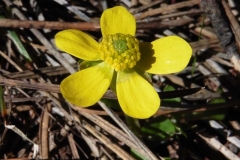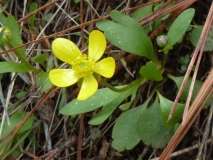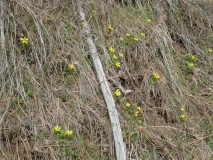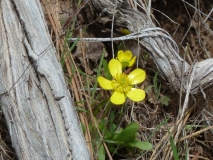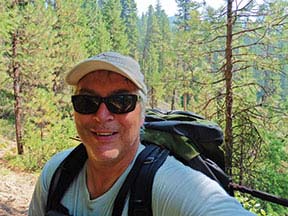No products in the cart.
Flash of Gold
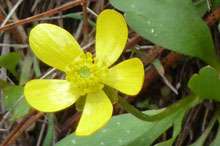
In the Flower Season
Story and Photos by Jerry W. Davis
It happens every year in late winter, even while the snow lies deep and the hint of spring is not yet carried on the wind—my thoughts turn to buttercups and I begin to dream of their arrival. Maybe it’s the lengthening daylight or maybe it’s the occasional rain mixed in with the snow, but my inner clock knows that below my feet the buttercups lie in wait, ready to rise as soon as the snow allows.
Snowshoes strapped to my feet, I climb the mountain behind my cabin in Garden Valley. It’s a south-facing slope, where the snow is sure to melt first. The elk know this as well, and I find their tracks crisscrossing the hillside, biding their time until the burden of winter has passed.
The snow first disappears under the pines, where I focus my search. The elk, choosing the path of least resistance, travel from tree to tree, making a trail for me to follow. I imagine that the elk and I are members of the Garden Valley chapter of the Buttercup Welcoming Committee, duty-bound to be present when the first buttercup cautiously appears.
February has turned to March, the snow has begun to recede, and I know the time is near. As I pass from bare patch of ground to bare patch of ground, my eyes constantly scan the newly exposed earth, looking for a flash of gold. In some years, this happens early in March, in others it is near the end of the month, but if I’m diligent, I’m always rewarded with that which has filled my thoughts for so long—a golden drop of sunshine nestled close to the ground, waiting patiently for me.
Buttercups are early bloomers.
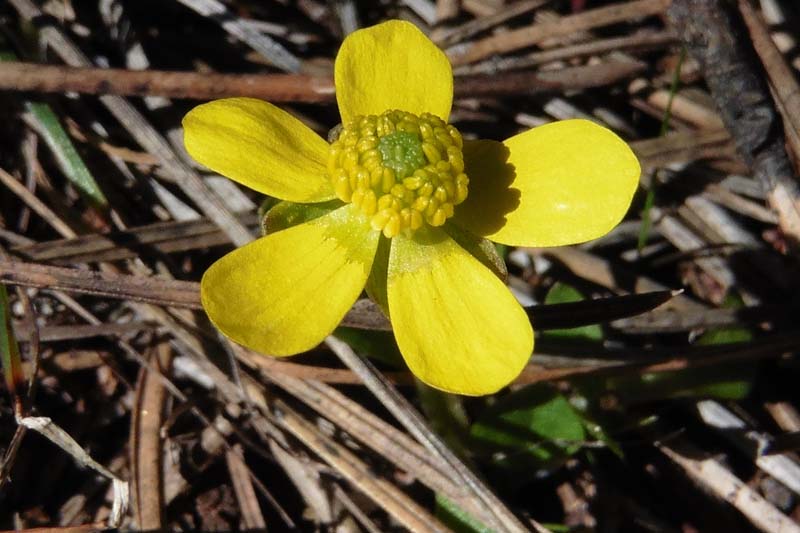
And they're extremely fragrant.
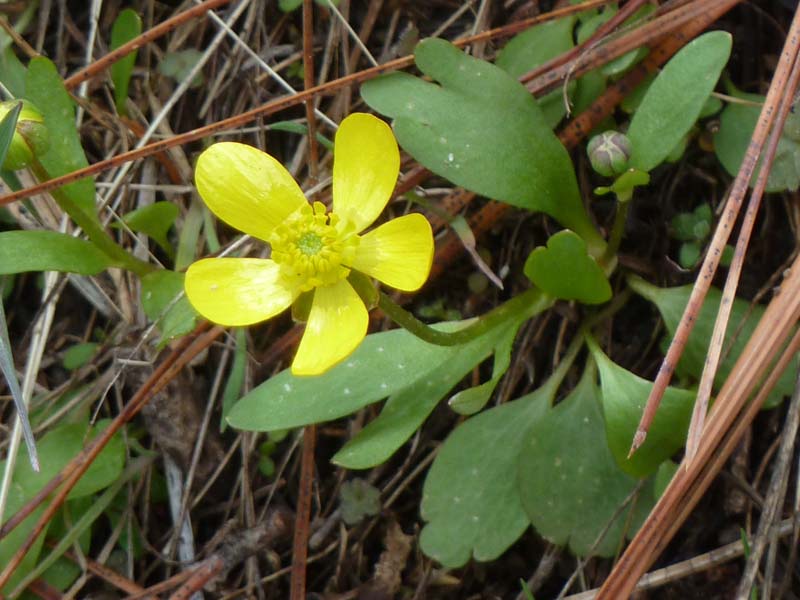
Buttercups in the mountains.
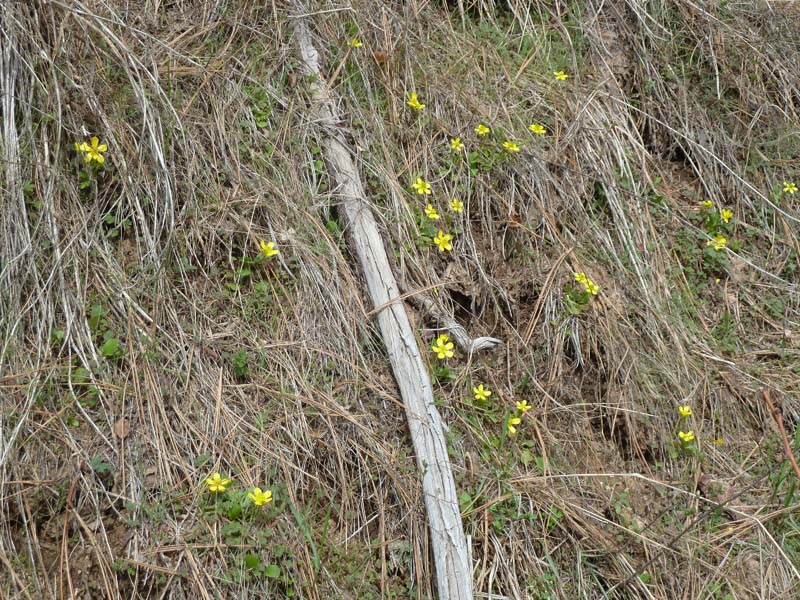
Sagebrush buttercup.
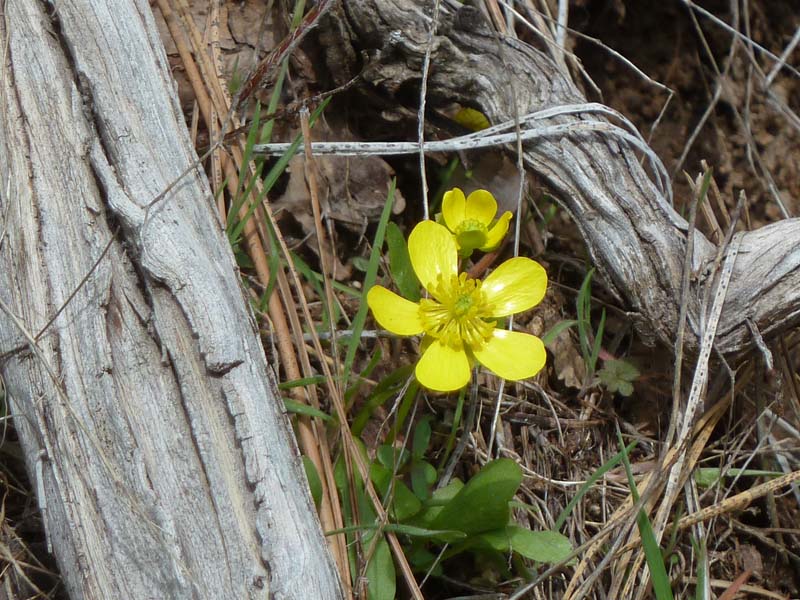
The sagebrush buttercup (Ranunculus glaberrimus) often flowers as soon as the snow melts, even though snow may remain all around. I am certain part of its appeal to me is that it’s the first flower of the year. In this case, I accept the old notion that first is best.
My guess is the elk already have given this first flower a proper greeting, but in case they haven’t, I want to do my part correctly. I drop to my hands and knees on the wet ground, lower my nose all the way down to the flower, and inhale as deeply as I can. It’s extremely fragrant, and I try to never pass up an opportunity to inhale its essence. I take three quick whiffs, which I long ago learned is the best way to maximize the smell. The wondrous aroma seems especially sweet after a flowerless autumn and winter. I sit myself down next to the flower, reluctant to pass it by too quickly, and I think of what buttercups mean to me.
Winter in the mountains is a time of quiet and stillness. It’s as if all life takes pause, waiting for spring. The elk limit their movement to that which is essential. The flowers lie dormant under the frozen earth, and even I slow down, preferring to spend my time sitting by the fire, dormant in my own way. I hold onto faith in the changing seasons, faith that winter will pass. And it is with faith that I search so diligently for the first buttercup, a sure sign that the change has begun. For me, finding the first flower of the season is reason to celebrate. Together, the buttercup and I bask in the glory of spring.
It grows very low to the ground, often rising up only one-half inch above the soil. This is a requirement of flowering so early in the year, because a cold March wind could sweep down the mountain, or worse, a March snowstorm could bring its reminder that winter isn’t over yet. For the buttercup, it’s best to be as snug and close to the ground as it can be. As the season progresses, I’ll find buttercups flowering farther and farther up the mountain, following the retreating snow. I’ve even seen them flowering in August next to a snowbank near the Continental Divide near the town of Salmon.
The buttercup has a green center and usually five waxy or glossy yellow petals (though I have seen some with eight or ten petals) with a diameter of about one inch. By late spring, it may reach a height of an inch or two. When it is in flower, grass and other plants are still lying flat from recently melted snow, allowing it to showcase its beauty. If it flowered later in the year, it would go unnoticed beneath a bounty of grass and other taller, more showy wildflowers.
As I sit and contemplate the buttercup, I feel as though I’m blending with the hillside. If I sit long enough, I may be rewarded with the sight of elk meandering through the trees, their noses pointed at the ground, no doubt in search of food. I like to imagine they’re looking for buttercups—not to eat, but to smell and admire. We’re kindred spirits, the elk and I, because they’re my fellow members of the Buttercup Welcoming Committee.
This content is available for purchase. Please select from available options.
Purchase Only
Purchase Only

